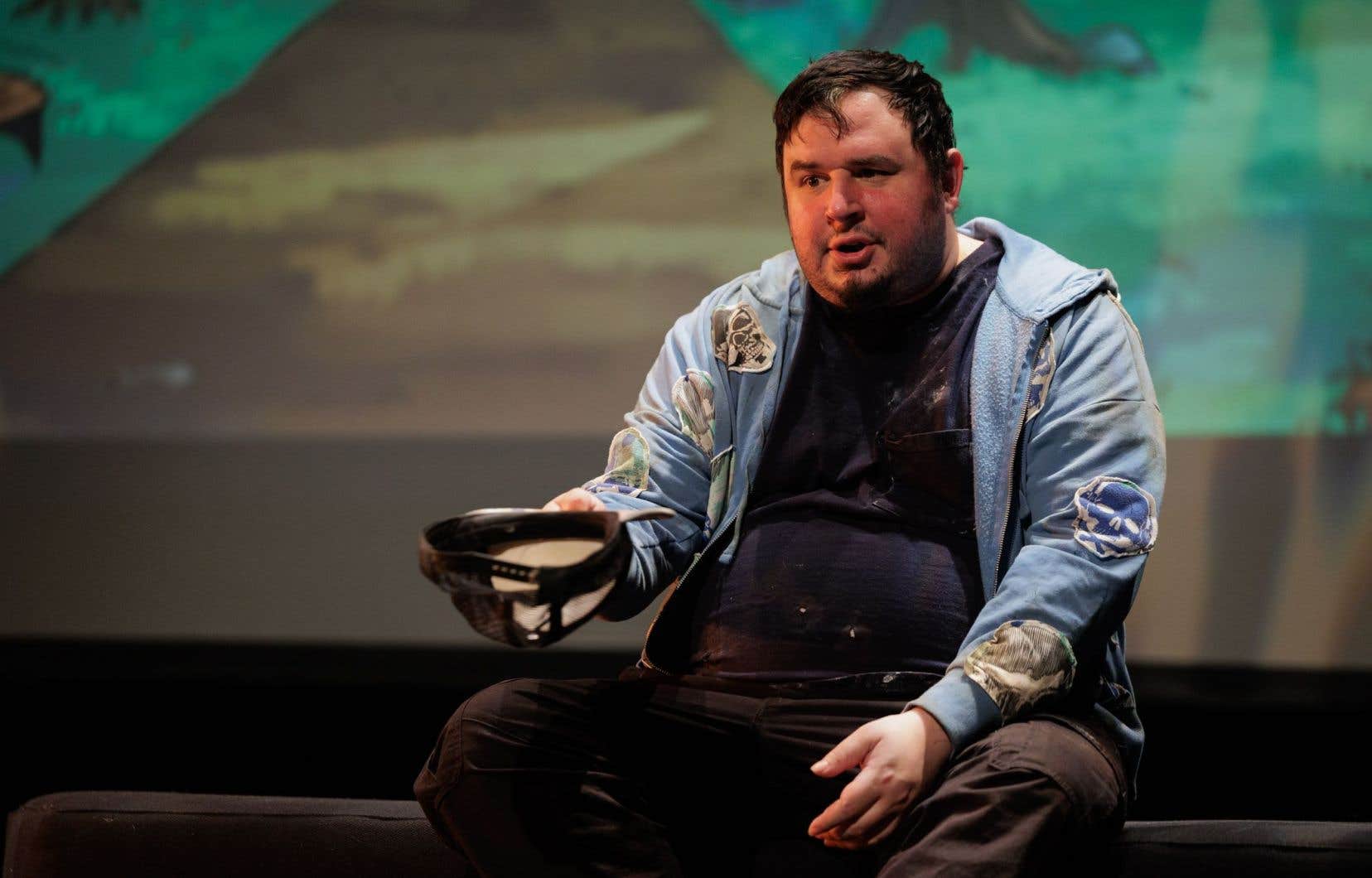Céline Marchand has light eyes and a pink complexion. Sometimes her brows furrow, and immense strength gathers within her. On the stage of the Maison de la culture Janine-Sutto, she recounts the first shower of a newcomer, in a homeless shelter in Montreal. She speaks of the fear of letting go of the dirt that one has dragged into the street as one’s last treasure, of seeing an entire life disappear down the shower drain.
This universe, which she depicts in the play Come on down the streetbased on the improvisations of a group of peddlers from The Itinerary, Céline Marchand experienced it up close. In 2009, broken by domestic violence, she lost her job, her apartment, her resources, her environment. Isolated, she lived for three years from one shelter to another, from two weeks to two weeks, rubbing shoulders with the most lost, the most deprived, “human rags”, she says, to the point of sending shivers down her spine. Three years in the most complete “disorganization”, doubting oneself, “with a spider in the ceiling from living with people who have problems”. Three years before finding the strength to get through it. Since 2013, Céline Marchand has sold the magazine The Itinerary at the corner of Masson and Saint-Michel streets, and lives in the same apartment. Some of her clients came to see her in the room that was on display this week. The man who destroyed it is no longer in the country.
Gabriel Lavoie called the police when a fight broke out between him and his roommate, who wanted to throw him out. That evening he found himself at the Old Brewery Mission. It was the start of an episode of homelessness that lasted two years. Cannabis, alcohol, amphetamines. Days of waking up in the street without knowing what he did the day before. Diagnosed with schizophrenia, he dropped out of school in 1D secondary. Today, at 43, he is returning to his 3e secondary. He writes scientific columns in the magazine The Itinerary and dreams of becoming a professional journalist.
It’s François-Étienne Paré, artistic director of the National League of Improvisation and also spokesperson for The Itinerary, who had the idea for this show. The six camelots participated tirelessly in rehearsals, week after week, in order to be ready for the big day. In their improvisations, they recount the dream of eating a meal prepared by their mother, fantasizing about passers-by who would fight to offer them their credit cards. They also told of friends who died of overdoses and missed funerals. If the facts are fictitious, they are inspired by personal experiences.
A thousand and one reasons
Domestic violence, divorce, death, car accidents, immigration, eviction, mental health problems, drug addiction, incarceration, there are as many reasons for ending up on the street as there are homeless people.
Moreover, there are more and more of them, according to Thomas Wayland, community organizer for The Itinerary who accompanied the peddlers in their theatrical project. “There are new profiles of people who come to our organization to request services,” he says. There are some who have lost their jobs. There are also some who moved to Montreal because there are more resources, who arrived from other regions of Quebec because they were really struggling. There’s also immigration in there too, you know. Personally, this is something that deeply shocks me. A person immigrates to Quebec or Canada for something better, but ultimately finds themselves homeless. And there are quite a few. »
Sophie Caron, actress specializing in improvisation, but also psychosocial worker, worked with the team of The Itinerary for two years. Many have “incredible” stories, she says. Each of them has vulnerable areas of course, but also incredible strength.
“They would tell me things and sometimes I would laugh. And when I arrived home, I said to myself, my God, it’s really cruel what the person went through. They have a way of telling it that becomes lighter. » But homelessness left traces in them, the passage of “everything that leads you to the experience of the street and all the efforts and the strength you need to get out of it”. “There are these injuries, but they have an incredible strength of character that makes them superheroes,” she says.
For Gabriel Lavoie, the show is interesting because it breaks the stigma. “It humanizes people who live in situations like that. There are people who will perhaps understand that they were wrong. That not all homeless people are the worst of the last. They have problems. They just need help,” he says.
Céline Marchand herself says she has changed her opinion on the homeless condition. “It really can happen to anyone,” she said. Think about it, someone who loses his wife, his children, his house burns down. He becomes crazy. So he sits on the street corner and drinks his beer. »
In one scene from the show, a politician approaches to campaign, but quickly follows the citizens who already have power and money. Gabriel Lavoie thinks, for his part, that the sole approach of building low-cost housing cannot solve the problem of homelessness, in particular because these constructions take time. “We hear politicians saying, we need to build more housing. Hurry up. But in fact, there are much simpler solutions. […] They don’t want to introduce laws that would protect tenants, and be cheaper than rushing to build. The problem is immediate. There are people who, at this moment, have lost everything. They are on the street. »
